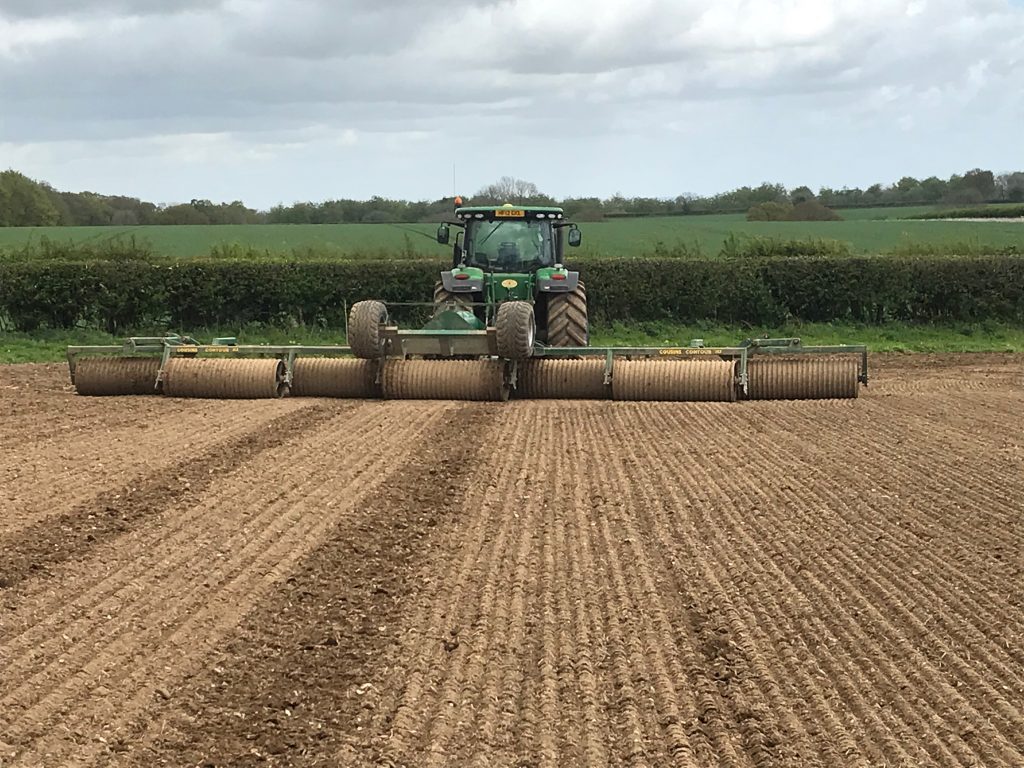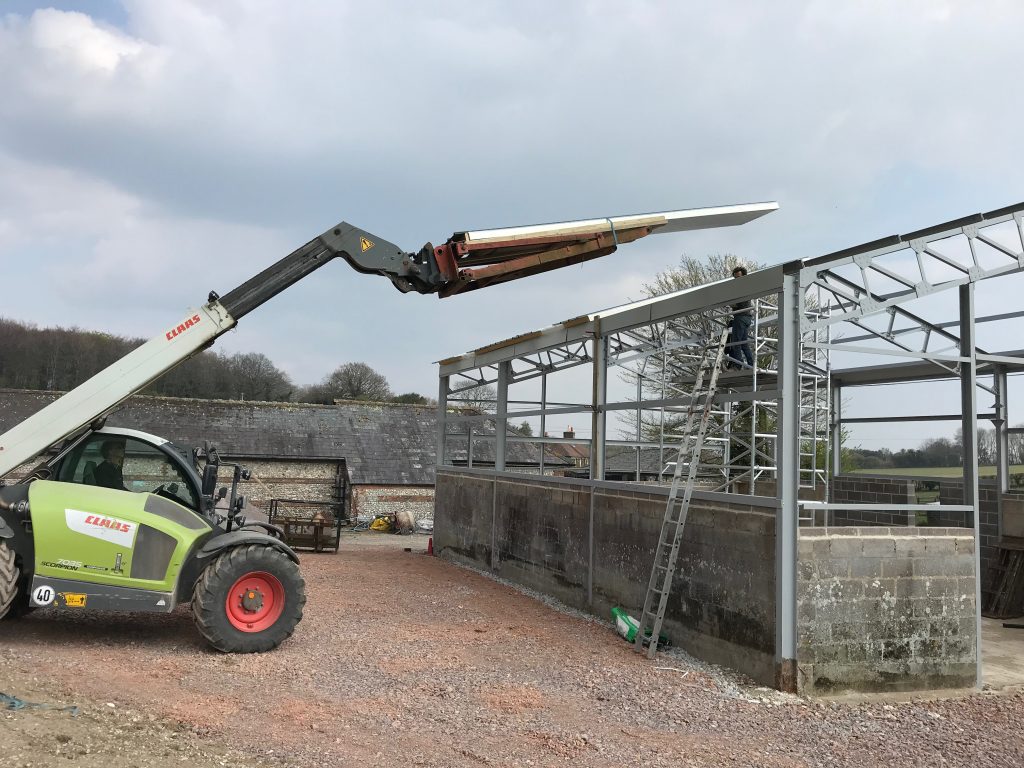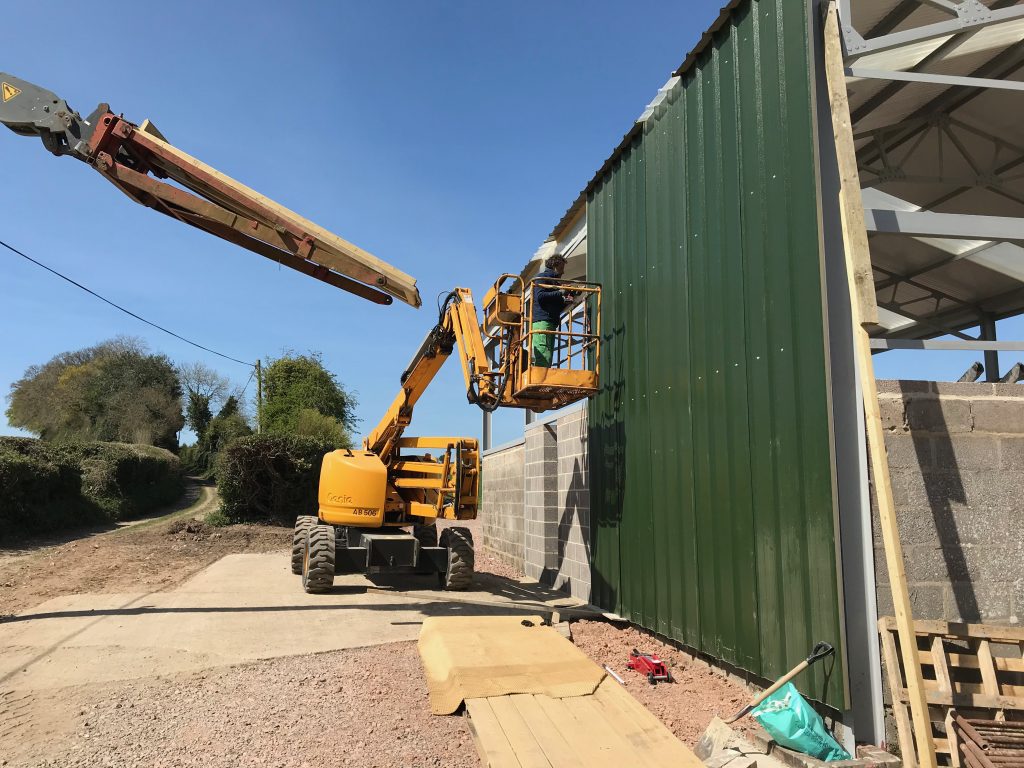View from the Hill 14th May 2021

The very welcome rain, when it began, meant we could get on and finish the last of the spring sowing. Here the new Sky drill is sowing some trial plots. We are trying out a number of crop combinations sown together, to see if there is a benefit to co-cropping, as it is called, two or more species growing at the same time is supposed to encourage a wider range of beneficial mycorrhizal activity in the soil, leading to healthier soil. The recent moisture should encourage swift germination. We have even planted a few sunflowers, even though previous experience showed them to be very difficult to harvest successfully. Some of the plots are intended to provide a supply of home grown seeds for sowing after harvest, except that they won’t be ready in time for sowing this year, and we will have to work out how to store lots of small seed lots without the mice getting into them, for sowing next year. The alert reader will be asking themselves how we are going to separate the mixed seeds that will result from the plots, and the answer is that we are hoping our seed cleaners at Evans and Pearce will be able to solve this one.

Even though we were interrupted by a storm, we managed to get the field rolled, just as well, because some of the plots contain peas, which if they fall over can be a challenge to pick up with the combine, stones are not good for combine health.
Since my last broadcast all the cattle have been let outside, they are much happier eating fresh grass than hay or silage, and at last the winter feeding and bedding routine has come to an end for another season. The cows have been joined, in the herbal ley fields, by our Aberdeen Angus bulls Rocky and Postman Pat, to do what bulls do, and try to make sure we will have another crop of calves next year. Last week’s school visits gave the cattle something to do, it is always fun trying to decide who is more entertained by such an encounter, the cows or the school children. Especially when a cow decides to use the tour trailer as a rubbing post and the whole thing rolls from side to side with everyone on board.

On the stormy weekend before last, a bough blew out of one of the old chestnut trees on the back drive to Bryanston, just as parents were about to bring their children back to school on the Sunday evening. It was still raining, but we managed to clear it safely, which provided unexpected entertainment for the big cattle in the meadows.

The government has published its animal welfare bill this week, accompanied by the astonishing declaration that animals are sentient beings. As if we didn’t know that. More and more I wonder what planet is inhabited by those supposedly clever people who try to run the country. My support for such a bill is tempered by my difficulty in trusting our rulers to honour their commitment not to compromise on our high standards whilst in the process of negotiating trade deals post Brexit. Will we really prevent the import of animal products that have not been produced to the same standards as those in the UK, which are already higher than most other countries in the world, and are about to get even higher? There are still many practices allowed in countries we are currently negotiating with that are banned here, on welfare grounds. For example, it is not uncommon to see journey times for live animals in Australia exceed 24 hours without access to feed or water. In comparison, the government has recently consulted on reducing domestic journey times in the UK to eight hours. The recent headlines about the Australian trade deal and UK farmers’ vulnerability to import of food produced to much lower standards than ours need burrowing beneath to understand the ramifications of this complicated subject.
The UK has form here, when our government many years ago unilaterally banned sow stalls, without waiting for at least the EU to catch up, our pig industry shrank by 40% in a very short time. The same thing happened with laying cages for chickens, we exported the cruelty and drove many of our own farmers out of business. Today’s farmers have long memories, and are extremely nervous.

The rape fields are now into full flower, this one, which was quite variable after the sheep grazing in the winter, has evened up well, though you can still see the lines where the electric fences were. The green strips are intended to provide new insect habitat, hoping that they will encourage beneficial insects to colonise them, and then to consume the damaging bugs that like to attack the crops. The seed mix is mostly wild flowers, with a little bit of cocksfoot grass, which grows in tussocks, and provides good over-wintering locations.
Our chicken enterprise has had a makeover, with a new house, a new field, and new fence. Much time has been spent knocking up the new house, complete with nestboxes with rear access hatch, and a pop hole, and then fencing around the new pen, with sheep netting and chicken wire, topped off with several lines of electric to keep the foxes out. All this for 16 hens and one






The work on modernising one of our sheds has continued this month, with an intense period of activity, firstly learning how to handle the 5 and 6m long insulated panels without denting or scratching them, and then installing them, leading to quite a change in its looks. The lifting attachment on the handler is adapted from a 1950s Fordson tractor front end loader arm, adorned with timber and plywood, topped off with deep pile carpet.




So much seems to have happened in the last month, I have droned on for long enough, however there are a couple more paragraphs that I couldn’t hold back, aimed mainly at fellow farmers, so I have put them on a page of their own. On sheep and hedges, click here if you really must!
And finally………
Our neighbour Mike Tizzard organised a vintage tractor run last Sunday, in aid of Future Roots at Rylands Farm, Holnest, which is run by Julie Plumley and her committed team. At least 30 took part. Future Roots offers the opportunity for young people to utilise a rural environment to enhance their well being and to reach their potential.
Here are some of the tractors lined up next to the river Stour at Bryanston, after which we headed off to Shillingstone and eventually Bulbarrow, for a late picnic lunch. We started in light rain, and finished in sunshine with a cracking view across the vale.



Very smart hen house.
The Government don’t want us to grow food in this country, just allowing a few artisans to produce luxury items. The rest can come from abroad where they have cheap labour, questionable production habits and, of course, carbon-free transport to the UK.
This political attitude has happened before in British history, as it is popular amongst the voters who prefer cheap food. There can be a slight problem if something goes wrong with the worldwide transport network as it did in 1914/18 and 1939/45. War is not compulsory for food shortages as many found out when the supermarket shelves were empty last April and May.
The government is only recently elected and with a very large majority. I suspect farmers and land owners got what they voted for.
Secondly how much are you charging for a week’s stay in that hen house in August?